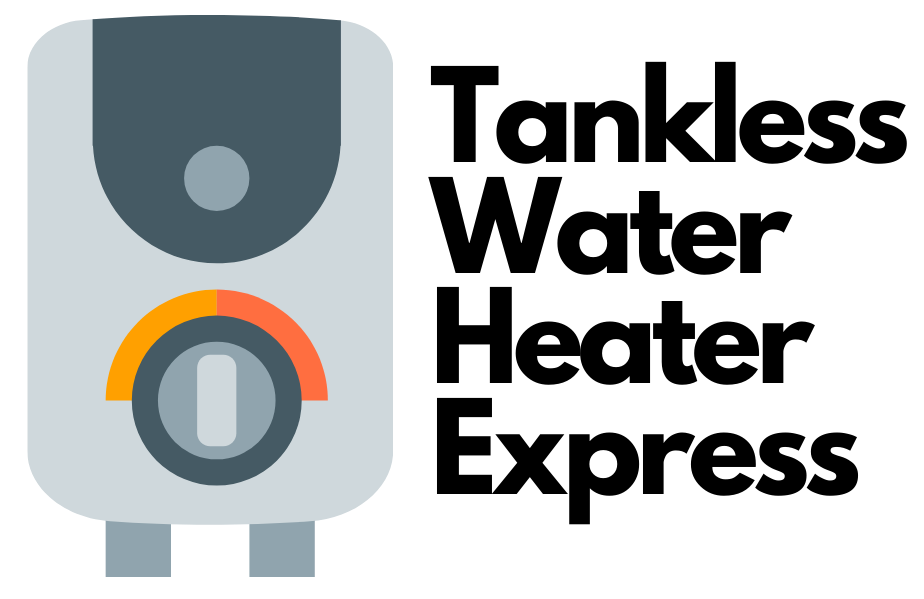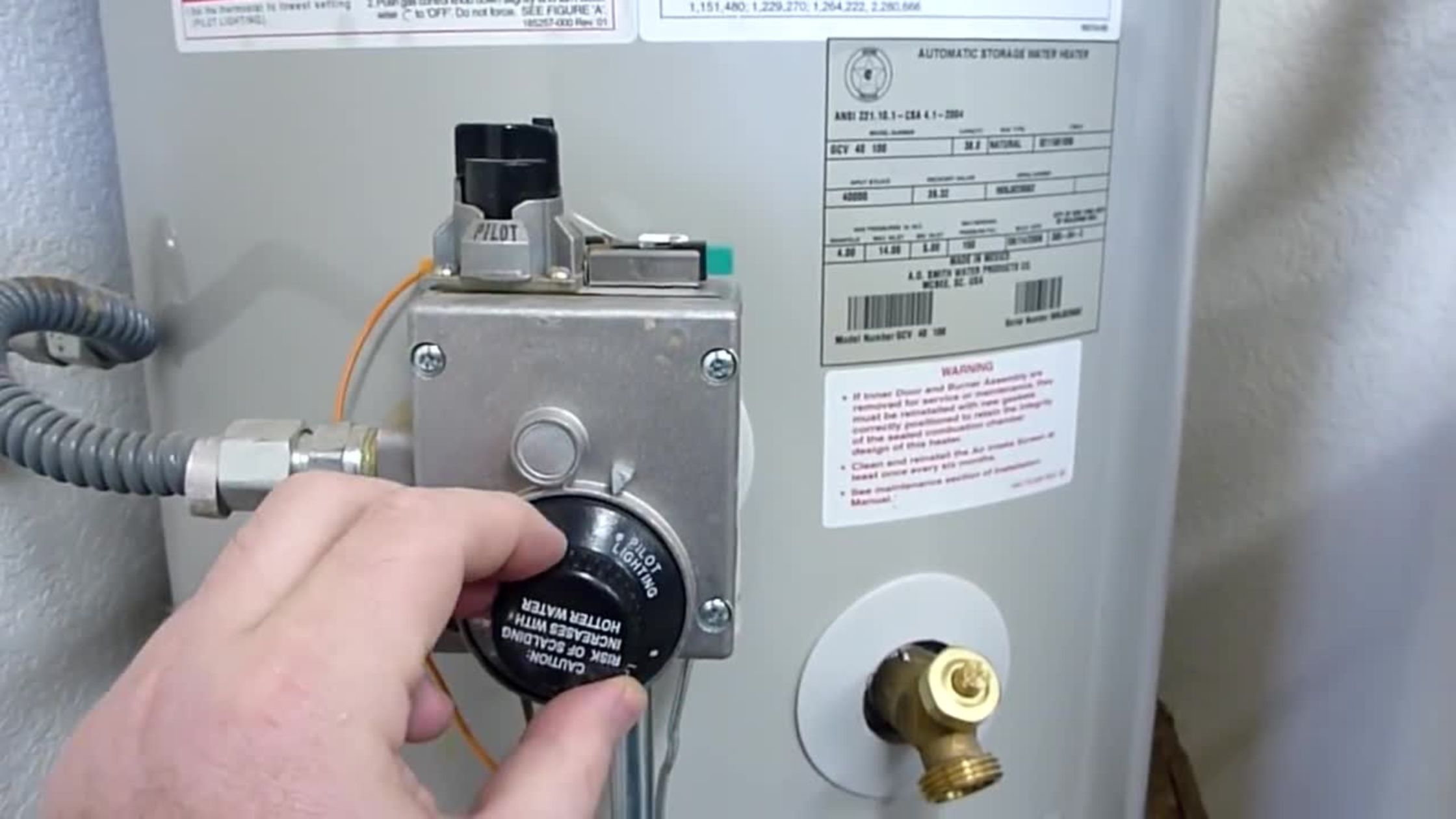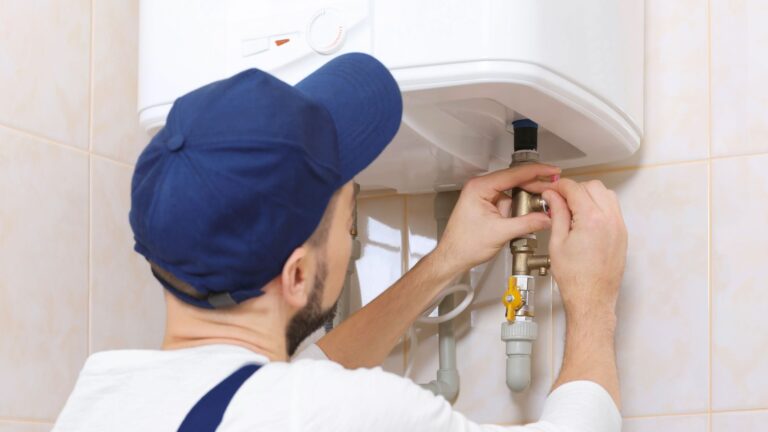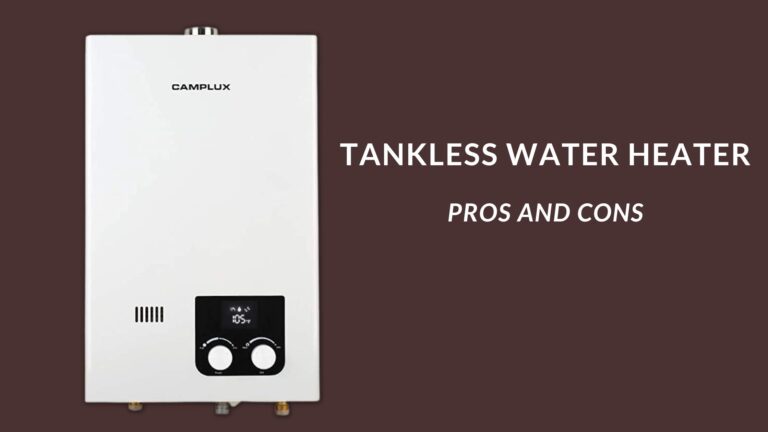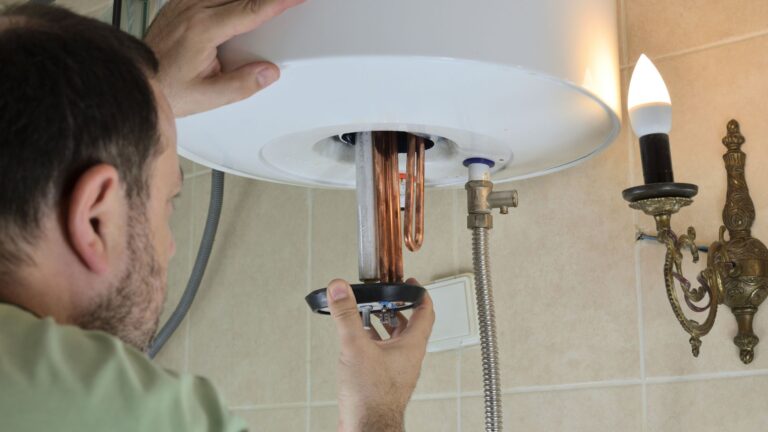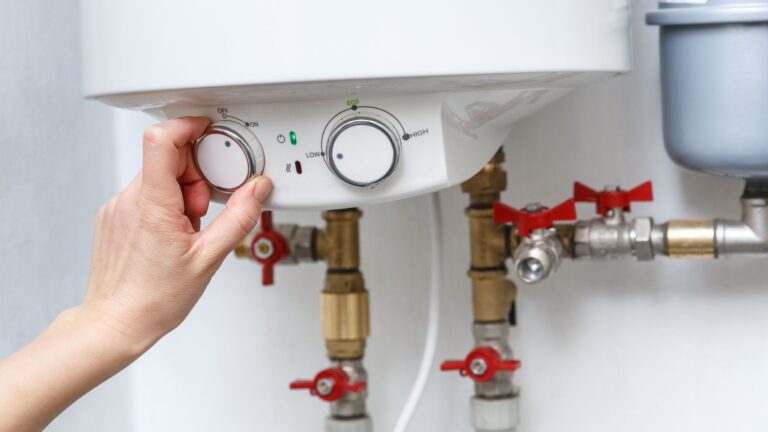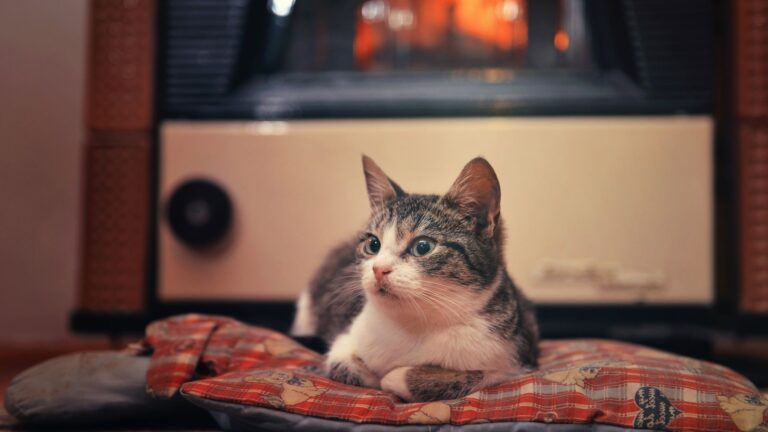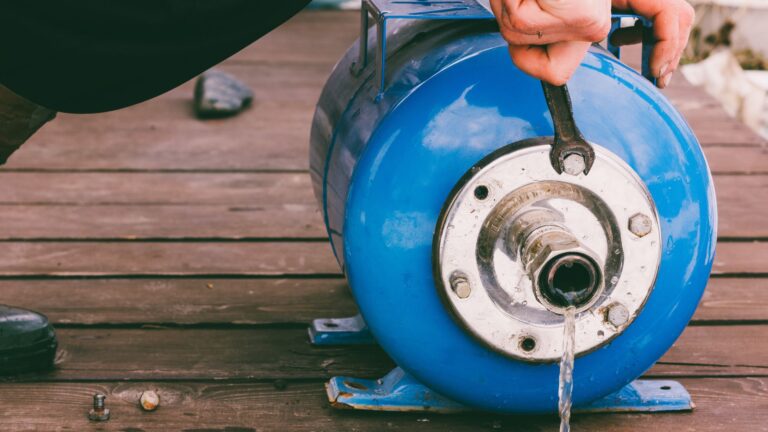How to Turn Off Water Heater? [Gas-Electric Both Covered]
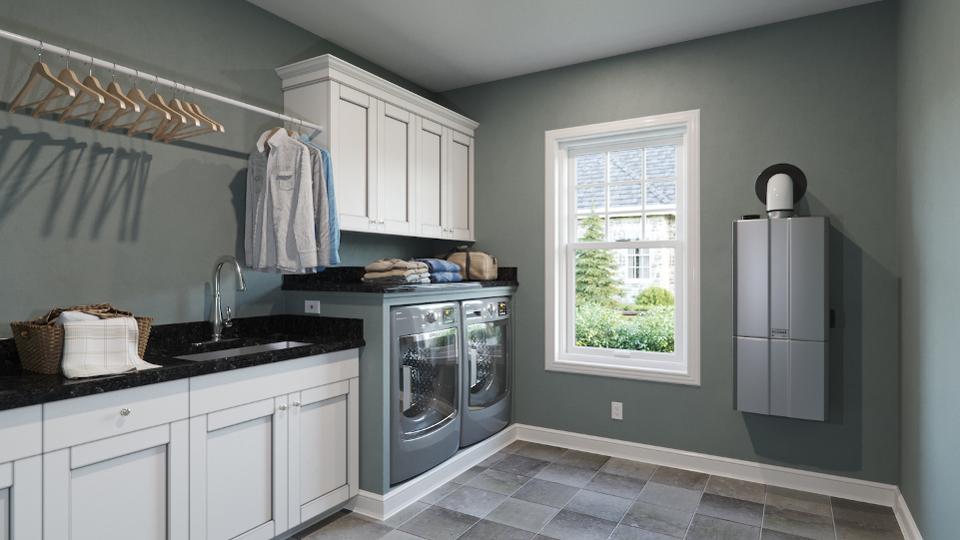
If you use a water heater daily, it is very important to use it properly. Just like it is important to know about the features of a water heater, it is very important to understand how to shut down the water heater properly. Failing to shut it down properly may affect the performance when you are using the product for the next time.
However, avoiding such minor faults can lead to serious accidents and eventually result in the water heater not performing. So you must follow the proper procedure to shut it off when not in use. If you want to know more, you can follow this article on how to turn off water heater.
How to Turn Off Water Heater?
There may be multiple reasons why you want to turn off the water heater. You may either be going out for a vacation or you are facing problems with your heater. The first thing to do in any type of quick response is to shut down the heater.
You may receive danger signals, overheating, and loud noises from the heater. But turning it off is the immediate requirement. If you are not a professional, you can just follow these steps mentioned below.
1. The Power Source
If you want to shut down the water heater, the first thing that you need to do is to turn off from the power source. But before this, make sure that you get it disconnected from every circuit breaker. For the gas unit, it needs to be a top priority.
So when you open the cover and place your hands, you must take care of these precautions to stay safe from any electrical shocks. If you are using a gas water heater, you can also look for the dial around the thermostat, and then you can move it to another direction. This will turn off the power connectivity for the entire heater.
2. Close the valves
The next thing that you need to consider is to close all the valves that are present around the heater. Whether it is an electric water heater or a gas-based heater, the valves present around them are different for each other. But there is one thing which makes all the valves similar and it is the mechanism of the work. To be fair, some of them are circular in motion and you need to change the direction to close the valve.
With the help of this process, it will open up the cold water flow into the heater, but the hot water outlet will be stopped. So the water inside the heater will start getting neutralized in terms of temperature. If the water supply is concealed, you need to shut down the valve for the entire home. You may not locate the valve at first glance and thus, closing the valves will be the most important thing to consider.
3. Drain the Water
If the heater was turned on just a few minutes ago, the water inside must have been hot. As a result of this, it becomes evident that you cannot touch the tank. So by opening the cold inlet pipe, you need to wait for a while till the water inside drops a bit in temperature. Once it drops, you need to connect a hose that will help you to drain the water.
You can just attach the other half of the hose to a tub or a bucket where you can flow out the hot water. But before you go further, you must go through the safety manuals. It will help to properly execute the drainage without breaking any valves or without causing any harm to the heater. Make sure that there are no leaks present.
4. Check the circuit breaker
Once draining is complete, you need to test the circuit breaker and then bring it back to the original position. Each of the parts of the circuit breaker is connected to different parts of the heater.
As a result of this, it may get confusing for anyone to understand what the configuration looks like. If you misplace any of the original positions, the components may fail to work. The easiest solution will be to click a picture of the prior configuration or to label them.
When there is any type of emergency and you have already switched off the heater, you can bring out this circuit breaker and can reconfigure it in minutes. In this way, you don’t have to turn on the power for checking the right place of the components.
5. Practice doing it
We always know that practice can make anything to be perfect. Shutting down the heater is not the most difficult task in hand. But most of us still do get confused about doing the shut down when it comes to playing.
This is because when there is an emergency and you have a shortage of time, you can panic at any step. So you must know everything properly for the event. This will help you to keep your calm and composure when you have any emergency with the heater. If you keep up with this practice, things will get much easier for you. You can check some DIY videos for opening or closing the valve slowly.
Never try to be in any sort of hurry when you are opening or closing a valve. Remember one thing that the whole mechanism of the heater works with suitable water pressure. You may never know when the pressure is high or low. But if you do the things in a hurry, it may affect the valves and even damage them. So you need to be very precise about the mechanism.
How to Identify Water Heater is Gas or Electric?
Before you get to know about how to turn off hot water heater, it is very important to know the type of heater that you are using. There are three different types including the gas water heater, the electric water heater, and the hybrid water heater. There are some identification marks which you can follow if you wish to know what type of water heater it is.
Identifying a Gas Water Heater
1. Gas Lines Present
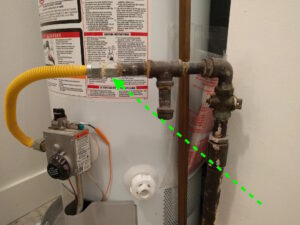
The first most evident thing that you will be able to see is the presence of gas lines all over the heater. These lines are specifically made which allows the natural or propane gas to pass from the burner to the ignition. Without the presence of gas lines, it makes no sense to run a gas water heater. Since gas runs as a low-pressure fuel, these pipes may just be naturally thin.
So when you check the interior components, you may find two different gas lines present which are responsible for carrying the gas from the bottom of the burner to the top of the heater.
2. Fume Vent Present
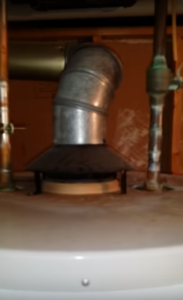
The next component that you will find is the fume vent. It is natural that when a gas heater is working, the gas tends to burn and thus, it may release a low amount of toxic gasses. Getting it mixed with the water can be harmful to the skin. So a gas water heater is specifically designed to take the toxic fume from the heater with the help of a vent.
This fume vent is connected at the top right above the ignition to collect the toxic gas and make a way out of the heater. So any gas-based water heater will have some type of vents present which will allow it to work as a metal chimney.
3. Access Panels
The next important components of a gas water heater are the access panels that are present. These panels are very helpful when it comes to heating the water. Most of the heaters come with two different access panels including the upper access panel and the lower access panel.
The space between the two panels may vary for different models, but usually, they are present on either end of the product and come with two screws. This access panel is responsible for the transmission of a heatwave from the bottom of the heater to the top. So it allows easy and fast heating procedures for the water present.
4. The Burner is assembled
When it comes to a gas water heater, the first thing that matters the most is the burner. Without the burner, igniting the gas is almost impossible. The burner should be present at the bottom of the water heater. The burner gets connected with a heavy metal gas pipe which allows continuous gas flow.
So you can check at the bottom where you may find the burner. However, the burner is usually covered with a removable outer plate which protects the gas to flow in a different direction. Without the burner, the gas heater can’t work.
Identifying an Electric Water Heater
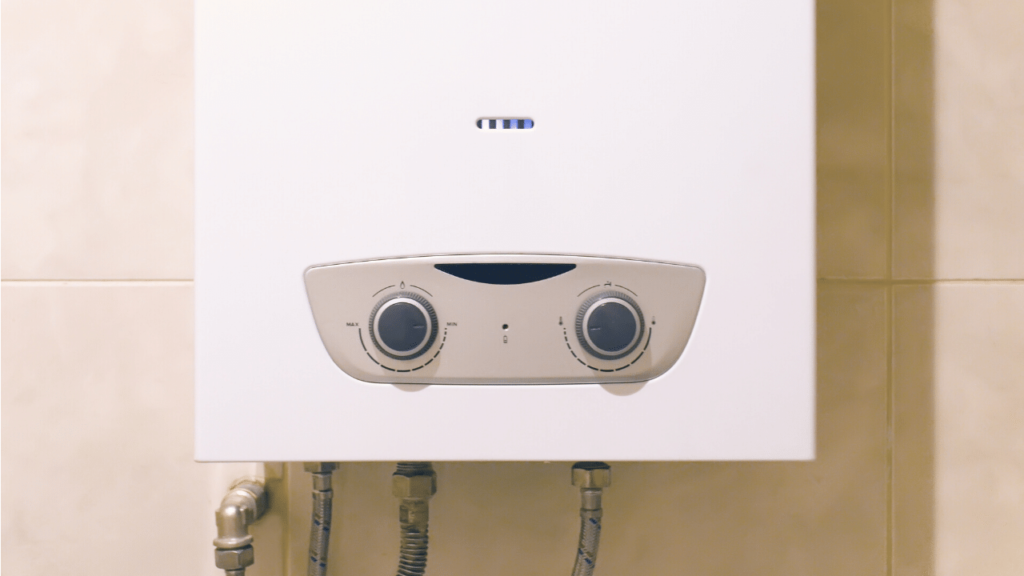
1. No Vents Present
When it comes to electric Water Heaters, it works directly with the help of electrical components. There are no requirements of vents since there is no emission of toxic gases. The main purposes of vents are to remove the toxic gasses out from the heater. When it comes to electric heaters, there is no emission of toxic gasses.
In fact, these gasses only come from the gas water heater which produces toxic materials. So there is no requirement in electric heaters to install vents to remove toxic gasses. Hence you will not find any vents present in the electric water heaters.
2. Access Panels
Similar to the gas water heaters, the electric waters heaters also require ignition. This ignition is provided with the help of access panels which are used to heat the water. You can find almost two access panels present in the electric water heaters which help a lot to provide accurate heat to the water.
Both these access panels are present on either side of the heater including the top end and the bottom end which heats up the water faster. They are attached with two screws in either end to provide optimum support to the heater.
3. No Gas Lines
The electric water heaters work with the help of electrical components present within the water heater. In fact, it comes along with electrical lines which help to get the work done faster. But since there is no requirement for gas flow, there are no gas lines present as well.
It comes with integrated circuits that allow the heater to trigger ignition and get started. So, you must not find any presence of gas lines in the electric water heater which will allow gas to pass through. In fact, this saves space inside the heater to make sure that you can get proper results.
4. No Gas Burner
Since the heater comes with electrical components, there is no presence of any gas inside the product. This means that there is no sign of any gas burner present with the product. At the same time, it is also certain that you will not get any gas burner present because there is no ignition of the gas.
Thus, it uses internal heating elements and there is no need to get any type of burner assembly. As a result of this, there are also no vents of gas pipelines. Instead, there are some electric components present just below the tank to heat the water.
5. Thermostat

Another important component of the electric water heater is the presence of the thermostat. The work function of a thermostat is to regulate the heat settings. Though it is most useful for the electric heaters! Since most of the gas heaters come with a constant rise of temperature, the thermostat provided cannot be much changed.
But it is different in the case of the electrical heaters. Here, the thermostat is provided with a rotating knob that allows you to change the settings as per your needs. So if you find a rotating thermostat, you can be assured of an electrical heater.
6. Shut off Valve
The shut-off valve is an important safety feature present in any electrical heater present. Most of the electric heaters come with fast heating technology and as a result of this; the temperature in the heater seemingly increases. It is thus very important for the heater to have a safety feature that will protect from any type of accident.
The shut-off valve is thus the component in every electrical heater that automatically detects the exceeding rise of temperature and shuts off the heater. You can find it near the ignition where the valve can detect real-time temperature.
How to Turn Off Gas Water Heater?

If you are using a gas water heater in your home, you need to make sure that the water pipes are draining properly. If you have just used it, make sure to give some time to let the water cool. Once it cools down, you need to shut off the cold water supply in the tank to ensure no water is coming in. Now, you can follow these steps mentioned below to get the best results.
1. Setting the Gas Valve on ‘Pilot’
The gas valve is located right at the bottom half of the water heater. In fact, in the case of a gas heater, it is present just above the burner chamber. However, it is simply a dialing knob which has multiple settings on it that allows you to change the gas flow. There are three settings including On, OFF and Pilot which allows you to get the controller to a position that you want.
So the first thing that you need to do is to turn the valve to a pilot position. This will allow the burner to be off. However, if you are doing any work near to the burner, you can always avoid these settings. It is best when you are draining the tank and allowing the water to flow out.
2. Now Turn the Gas Off
When your draining is complete, the next thing that you need to do is to turn the gas off. This will help you to escape from serious accidents if there are any. While working with the heater, you may face issues where the gas starts to leak. So try to make sure that you can turn the gas valve position to OFF.
You can do this easily with the help of a gas ball valve which is present near the piping. This will allow the gas to be powered off and then you can continue with your work. Precisely, if you turn the ball valve to 90 degrees from the initial position of the handle, it will be in the OFF mode.
3. Letting the water cool
The water inside the heater may just be very hot. So if you start working on it immediately, it may cause you to burn your fingers or damage your hand seriously. However, the one thing that you need to do is to allow some time to get the water cool.
However, if you do not have an ample amount of time, you can allow the flow of water to pass through. This will make sure that the water temperature in the tank starts to neutralize. After some time, it will tend to get much cooled down. So you need to wait for this time to let the water heater be ready for work.
4. Shutting Off the Water Supply
Once you have allowed the hot water inside to cool down, you now have to close the water inlet pipe. A continuous flow of water may be dangerous for you to work with. If you accidentally open the interior tank in this situation, there may be both water leaks and gas leaks.
So to avoid this, you need to close the water supply. Make sure that all the hot water supplies are also closed before you close the cold water supply. By doing this, it will allow the heater to allow the water inside to rest to prevent any possible outbursts.
5. Open up a Hot Water Faucet
The next important thing that you need to think about is an airlock inside the heater. If the hot water faucet is closed, it will cause an airlock inside the drain valve. This will lead the heater drainage system to not function properly. So to avoid such situations, you need to open up any single hot water faucets.
If your heater is connected with multiple hot water faucets, make sure that you open the nearest point. This allows the pressure to get released without even hampering the drain pipes.
When you open up a hot water faucet, it will likely start to drain the hot water inside. Opening only the nearest faucet will increase the pressure and will allow the drainage to happen faster. If you are looking for a permanent shut down, you need to ensure that the heater is completely vacuumed from inside.
This will allow the heater to be completely air-dry from the interior and will not start forming any type of corrosion or debris even if you do not use it for months. So make sure that you close the faucet again only after the whole water inside is drained out.
How to Turn Off Electric Water Heater?
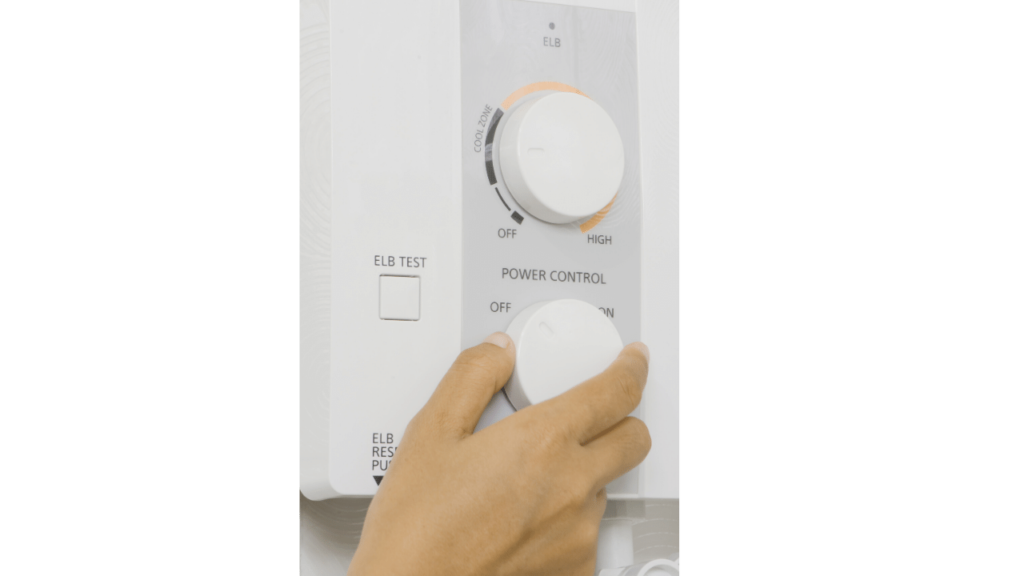
The situation for the electric water heater is quite similar to that of a gas water heater. However, since the mechanism is different, there are a few things that you need to follow. You can have a look at these steps mentioned below to know more.
1. Turn off the Breaker in the Water Heater
The breaker panel in a water heater is responsible for providing power to the ignition. So before you touch the heater and start working with it, make sure that you need to turn off the breaker. There are two-pole breakers available in any water heater. If you have a closer look at the panel, you can easily find the breaker without any issues at all.
So make sure that you can spot it and turn it off. The breaker in a heater may be just around 30-35 amps in case it is not marked. So you can check the whole panel and look for the switches which have such high power.
However, simply shutting off the breaker will not do the job for you. You need to lock out the breakers to ensure that you do not put it back to power while using the heater again.
2. Tag the Breaker
According to the OSHA standards, every person needs to lockout and tag out the breaker in case of any physical harm that can be caused by the heater. In-home, you may not have a practice to these protocols, but it is very important to follow to avoid any type of serious injuries because of the heater.
So you can take the help of a tape or a market and block the breaker to access. However, before you start tagging the breaker, make sure that you can always turn the heater completely off and plug it out of the power source to avoid any type of serious damages caused.
3. Cool off the water present inside
The next thing that you need to do is to simply allow the water to cool down. Just like any gas water heater, the water present in the electric heater also remains hot. So if you start working with it immediately, you can burn your fingers. If you keep the power off for a few minutes, the heater will not raise the temperature.
But to allow it to drop the temperature, you need to give the heater some tie. To allow it to cool faster than the rest, you need to make sure to open up the hot water faucets.
Try to choose the hot water faucet near to the heater. This will allow the pressure to be much higher and will allow the heater to cool down after some time. However, if you do not have much time to wait, you can also opt for opening a cold water inlet. This will allow the colder water to enter the heater and get mixed with the hot water present inside.
Because of the difference in temperatures, it will start cooling down easily. Make sure that you leave the hot water faucets completely open to prevent any type of mixture.
4. Shut off the water supply
Once you get rid of all the hot water that is present inside the heater, you need to make sure that there is no air pressure formed. If you keep supplying the cold water continuously even after the whole hot water is drained out, it will cause an airlock inside the heater. If such a situation comes, the heater may not work even properly.
This will become very difficult for you to work with. In such a situation, you need to immediately turn off the cold water supply. You can check the current temperature of the water by touching the pipe. If it remains to be hot, you need to keep the cold water running. But if it is already cold, make sure to turn it off immediately.
5. Draining the pipe
The next thing that you need to do is to wait until the water is completely drained from the heater. You can also check the pipe for assistance on this. If you find water flowing through the pipe, keep the faucets open.
However, if you find that the draining is over, lose the faucets which are connected. However, if you take up more time to close the heater, there may be chances of air bubbles. So to avoid it, close the faucets after use.
Frequently Asked Questions [FAQs]
Q1.Can I turn off the water and leave the water heater on?
A1. It can be a dangerous idea to leave the water heater on while closing the water. This will allow a constant temperature rise in the heater and ultimately lead to serious damages to the heater.
Q2. Is it OK to turn off the water heater?
A2. If you are not using the heater for many days, it is very important to keep it off. If you rest water inside the heater for many days, there can be chances of corrosion and debris formation inside the heater.
Q3. How do you turn off the pilot light on a water heater?
A3. To turn off the pilot light in the heater, you need to turn the gas valve to the off position. This is specifically 90 degrees to the initial position of the valve.
Q4. Do I need to turn off the water heater if I turn off the water?
A4. Yes, you need to turn off the water heater when you turn off the water. In fact, you must do power off the heater right even before working with the heater.
Q5. Should I turn off my water heater when on vacation?
A5. Yes, it is always important to turn off the heater when you are going for long outdoors. Make sure that you disconnect from the power source as well to avoid any type of short circuits. Check this article for other questions that come to mind.
Q6. How to turn off a water heater water supply?
A6. Of course, it’s the easiest thing to do if you’re moving out for a few days. When it comes to the supply lines, there are two specific pipes that you need to consider. The first one is the cold water inlet pipe while the other one is the hot water outlet pipe.
Both of them are equally important for the proper flow of water. But if you observe closely, both of them have specific valves present at the bottom of the heater. Just turn these valves in the opposite direction and it will be turned off.
Conclusion
You may be careless about turning off the heater when not in use for regular days. However, such minor negligence may lead to serious issues in the future. Turning off the heater is very important before you opt to go for a vacation or in the summer days. But if you do not know the right process and casually powering it off, you may be doing it wrong. Follow the above information on how to turn off water heater.
